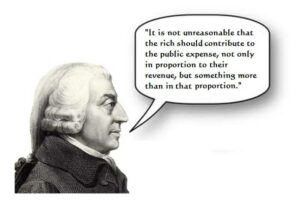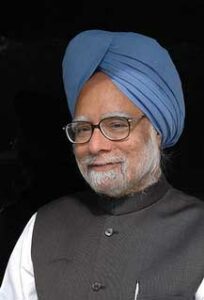 Sangeeta Sambhi, Keekli Intern
Sangeeta Sambhi, Keekli Intern
Economics is a social science that studies the fluctuating trends in the field of production, distribution, and consumption of goods and services. Not only this, but economics, also happens to be the science, that deals with the human behaviour patterns, at large. The household sector, firm sector, buyers and sellers, all form a part of its domain of research. While, supply and demand, time value of money, purchasing power and scarcity of resources are few concepts that form a part of its significance, on the same lapse of happenstance, opportunity cost and sunk costs, are some of the expenses to be borne, otherwise.
Economics has existed in the society, for as long as human beings have. With reference to the ancient times, economics, was mostly used for calculating the difference between, expenditure incurred on livestock and raw materials, and revenue generated, after selling them. Followed by mending and redefining the subject, dating back to the 1700s, a Scottish thinker, Adam Smith, in the year 1776, was widely appreciated and celebrated for introducing and promoting the idea of modern economics, in his published book, An Enquiry into the Nature and Causes of the Wealth of Nations. However, it has always been a point of contention, that conflicting theories have existed ever since the 15th century, going right up to the 18th century. Where one set of population concurred that, Adam Smith was the introducer of Economics, likewise, another set of population, believed that Greeks have always had a greater share in its invention and promotion. But, after exploring the depth of the contributions, it is concluded, Smith was the first one to write a treatise on topics of market relevance. Hence, being regarded as the Father of Economics.
 History of economics, has seen many scholars, adding relevance to its significance. Few major occupations branching out of it, most of them, have seen male candidates, holding all the prestigious positions. Where economists like Dr. Amartya Sen, Raghuram Rajan, Arvind Subramanian, Dr. Krishnamurthy Subramanian, Sanjeev Sanyal, Dr. Arvind Panagariya, Dr Manmohan Singh, Viral Acharya, have encompassed the limelight, for their notable contributions. On the even-kneeled lapse of responsibilities, we see fewer female candidates, in the same profession.
History of economics, has seen many scholars, adding relevance to its significance. Few major occupations branching out of it, most of them, have seen male candidates, holding all the prestigious positions. Where economists like Dr. Amartya Sen, Raghuram Rajan, Arvind Subramanian, Dr. Krishnamurthy Subramanian, Sanjeev Sanyal, Dr. Arvind Panagariya, Dr Manmohan Singh, Viral Acharya, have encompassed the limelight, for their notable contributions. On the even-kneeled lapse of responsibilities, we see fewer female candidates, in the same profession.
The ratio of both the genders, to have an equal hand at the occupation, has been struggling for stabilisation, and has rather seen the gap widening and decreasing. Relevant study carried out on the same domain, indicates that only 16,647 out of the 63,833 designated economists, are female candidates. Other than that, statistically, female economists, form only, 26% of the total occupational structure, in the field of economics and finance. The enrolment records, in the past few decades, have analysed that the growth rate in the enrolment avenues, have only increased at a low of 0.6%. Shockingly, only 22%, of the staff at tenure-track faculty, consists of females.
Reasons behind the low participation rate, being many. Few major ones being, lack of employment opportunities for women, with primary and secondary school education. Non-availability of white-collar jobs for women, long hours of work and minimal job security, lack of safe working environment, undervaluing their contribution and under-reporting their work, pay gaps, being out-competed by male employees, and lack of awareness. Why women need to be a part of Economics, is a fact to be dispelled. On hindsight, women are considered to increment the gross domestic product (GDP), by 16% to 17%. Not only this, but women are also considered to abreast exemplary formulation of logical policies. Their multifaceted abilities, makes it easier for them, to adapt to any change, and work on diverse genre of issues. They are mostly celebrated, for their practical sure-fire, in the field of finance.
 Gita Gopinath, a popular name, you might be acquainted with, is oftentimes showcased in various trending reports and news articles. She is an erudite, Indian-American Economist. Having an incomparable intellect, she became the first woman to serve as the Chief Economist, at Economics Department, of International Monetary Fund (IMF). Her multifaceted vision and determination, has made her serve as the first Deputy Managing Director, at IMF. Her achievements do not stop at this. She has also been ranked number two, in holding a position of leadership. Her analogy is, “Going forward, the world has to be one that is less unequal.”
Gita Gopinath, a popular name, you might be acquainted with, is oftentimes showcased in various trending reports and news articles. She is an erudite, Indian-American Economist. Having an incomparable intellect, she became the first woman to serve as the Chief Economist, at Economics Department, of International Monetary Fund (IMF). Her multifaceted vision and determination, has made her serve as the first Deputy Managing Director, at IMF. Her achievements do not stop at this. She has also been ranked number two, in holding a position of leadership. Her analogy is, “Going forward, the world has to be one that is less unequal.”
Likewise, few other, equally exalted and successful female economists who have served India, with their noteworthy contributions are, Rohini Pandey, Professor of Economics and Director of the Economic Growth Center, at Yale University; Jayati Gosh, Chairperson of the Centre for Economic Studies and Planning, at the Jawaharlal Nehru University, New Delhi; Dr Shruti Kapoor, Women’s rights activist, and social entrepreneur, founder of Sayfty – an initiative that aims to educate and empower young women and girls against all forms of violence.
Fiercely ambitious women, have always existed, be it, during the 1900s, or, in the 21st century. Starting from, Krishna Bhardwaj, Neo-Ricardian economist mainly known for her contributions to the economic development theory, and the revival of the ideas of classical economics; right up to, Gita Gopinath, India has always been proud of the achievements these ladies have brought back home. Working on initiatives, with fervent energy and constantly trying to empower other women, about their rights and independence, India awaits the contributions of highly educated and protrude women, in the field of Economics and Finance.


amazed every week. Great writing. A fan now
Thoughtfully written.
Very well written
Love the content and the choice of words is beyond perfection! ❤️
Very informative! Loved reading it